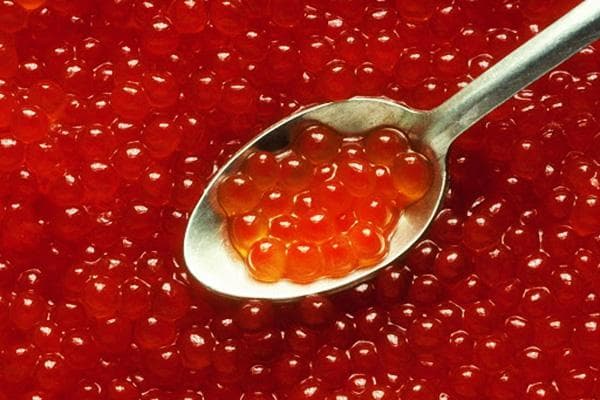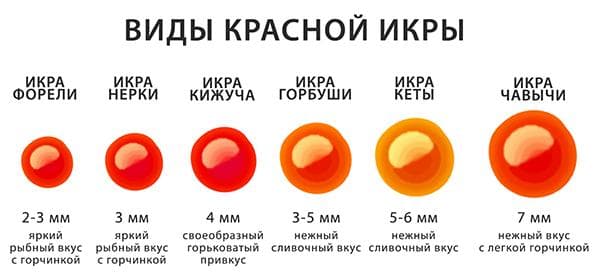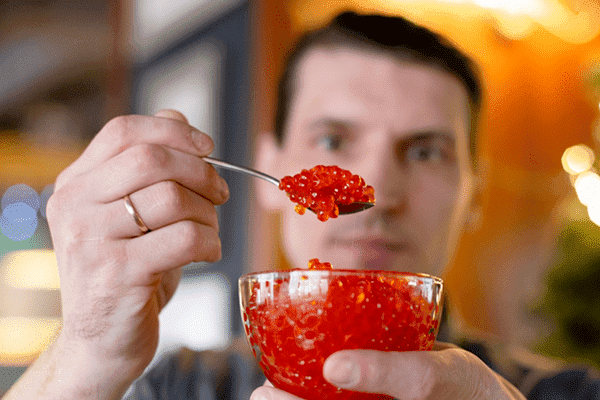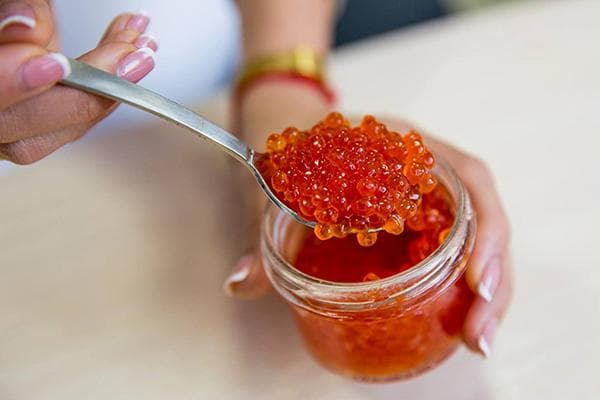How to check red caviar for naturalness in 2 minutes at home and in the store?
Caviar is an expensive and most counterfeited delicacy. When buying it to pamper yourself and your loved ones with delicious pancakes or sandwiches, you risk stumbling upon a counterfeit every time, so remember how to check red caviar for naturalness at home.

What color is natural caviar?
The appearance of caviar can tell a lot about its quality. For a person who wants to understand whether the product in front of him is a natural product or a counterfeit, the main guideline will be color.
The easiest way to identify fake black caviar is that it is almost always painted black or black with a blue tint, obtained using cuttlefish ink and activated carbon. The natural color is much lighter - depending on the type of fish, it can be brown, dark gray, gray-olive, some varieties also have a golden tint.
Please note: halibut caviar, which is often sold as black, is not actually black - in fact, it is cream-colored.
It is more difficult to understand red caviar, since it is obtained from a huge number of fish and the specific variety is not always indicated on the packaging.
If the manufacturer still clarifies this information, take a closer look at the color and size of the contents of the jar:
- chum salmon should be amber-orange, large;
- sockeye salmon caviar - dark red, medium size;
- Coho salmon has a burgundy color and a small diameter;
- trout is distinguished by its bright orange color and tiny size (no more than 3 mm);
- Pink salmon caviar is orange, less often light orange, and not very large.
A mandatory attribute of natural caviar, red and black, is the so-called eyes (germinal nuclei). They have also learned to counterfeit, but this process increases the cost and complicates the technology, so “underground” counterfeiters ignore it.
We determine quality by taste
The taste of caviar differs depending on the variety and salting method. But in any case, it should be fresh, without any foreign flavors. Excess salt does not always indicate a fake, but is always a sign of a low-quality, cheap product.
Each egg can be compared to a chicken egg - it has a thin but fairly dense shell, inside of which there is a semi-liquid protein mass. Therefore, the real one bursts in the mouth when lightly pressed with the teeth and tongue, unlike the fake one, which can be bitten and chewed.
Verification using traditional methods
The easiest way to check the naturalness of caviar is with boiling water - just put 5-10 eggs in a glass and pour very hot water over them. Since a natural product primarily consists of protein, this same protein will undergo denaturation (in other words, “curdle”). The water in the glass will immediately become cloudy and whitish. A fake made from gelatin or agar-agar will dissolve only slightly under the influence of boiling water, and drops of melted fat will appear on the surface of the water.
The hot water method is convenient to use at home. If you go to the market or to the store, take with you a bottle of 3% hydrogen peroxide solution (sold at any pharmacy).This substance also provokes protein denaturation - you just need to put a few eggs on a spoon, pour peroxide over them and wait a minute or two.
Is it possible to eat fake?
As a rule, “man-made” caviar is made from completely edible ingredients - fish broth, gelatin, food coloring and flavorings. However, if this is not an imitation of caviar with the corresponding designation on the label, but a counterfeit, it is better to refrain from eating such a product for several reasons:
- it is unknown who carries out production and under what sanitary conditions;
- it is impossible to know the real composition;
- there is a possibility that the manufacturer does not control the expiration dates and storage conditions of raw materials.
It’s easy to check caviar for naturalness at home. This does not require expensive reagents or complex equipment, so before you buy this product or before you put it on your table, be sure to perform one of the suggested tests.




Never got caught! Fish with simulated caviar do not swim! It’s enough for me to take one egg on my finger, and I’ll be able to tell without a mistake whether it’s fake or not!
And what is it???